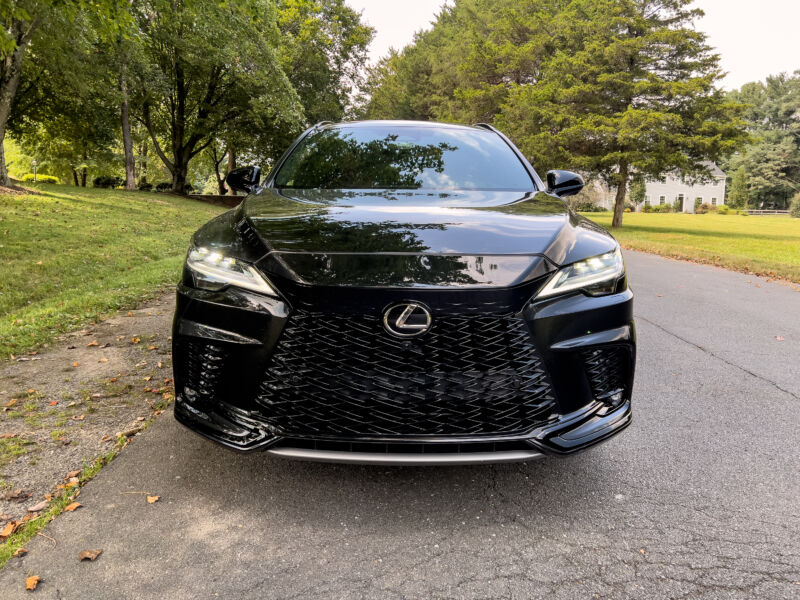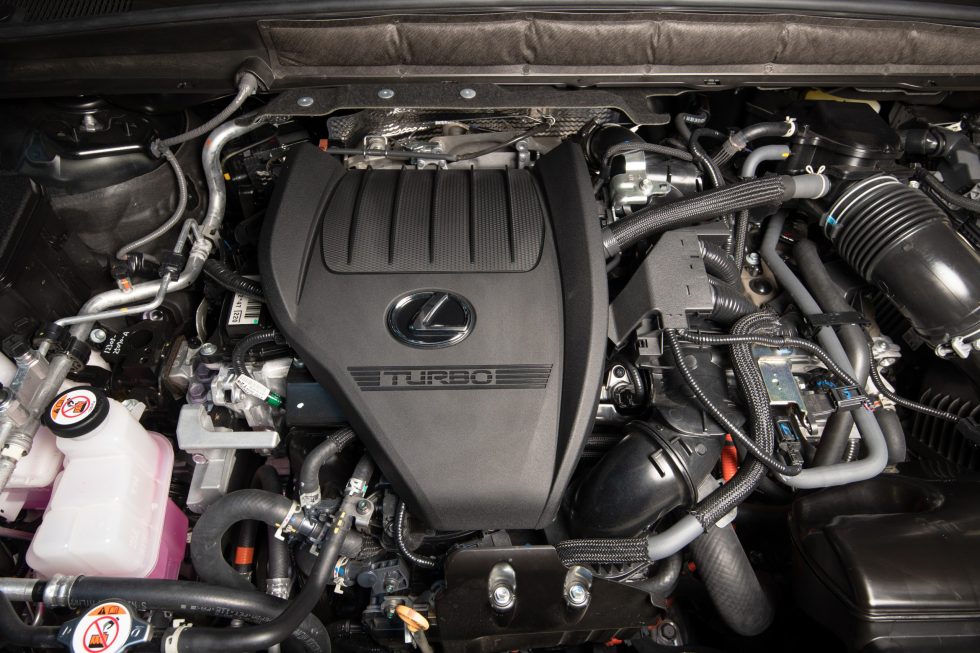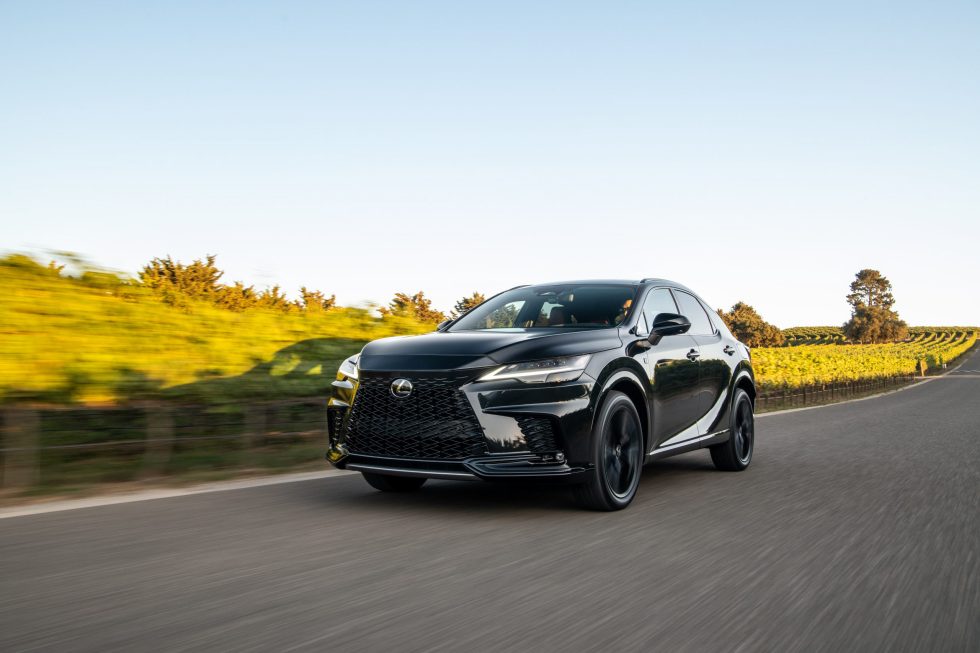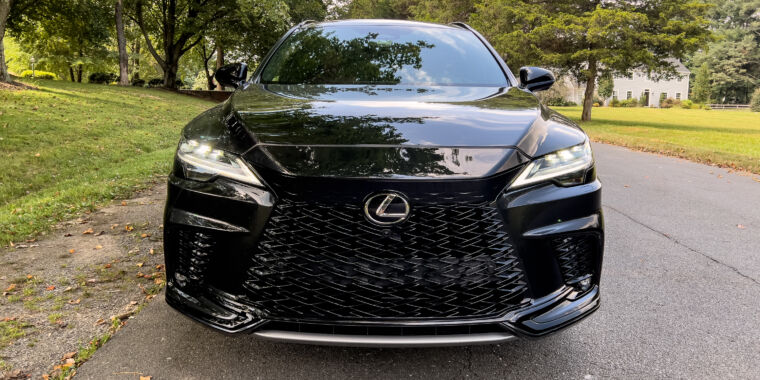
Jonathan Gitlin
Something about automotive body styles brings out emotions in people. Witness the once-mighty station wagon’s fall from grace; at one time, it was the family supercar, now it’s mostly just adored by people on the Internet (who never actually buy them) and reviled by everyone else. The wagon gave way to the minivan, which in turn lost favor to the SUV, but the real winner over the past few decades has been the crossover. Something of an “I know it when I see it” category, the crossover is more car-like than an SUV, and more SUV-like than a car and subject to plenty of arguments over what does and doesn’t quite fit in that four-wheeled pigeonhole.
If you have feelings about the crossover—and from the comments I know that some of you do—it’s probably Lexus’ fault for creating them in the first place. In 1998, the then-upstart Japanese luxury brand introduced the RX 300, an attractive luxury hatchback with an off-roader’s ride height, and a new segment was born. Now, nearly a quarter of a century later, the RX is in its fifth iteration, on a new GA-K platform that’s stiffer and lighter than before.
-
A black-on-black car is horrible to photograph. Just saying.
Jonathan Gitlin -
The RX 500h’s styling has come a long way from the clean and elegant lines of the original RX 300.
Jonathan Gitlin -
It took the SUV and crossover for Americans to admit they love hatchbacks again.
Jonathan Gitlin -
The RX 500h F Sport rides on low-profile Michelin Pilot Sport 4 tires.
Jonathan Gitlin
Its styling has gotten a little more complicated of late—particularly that massive Cylon-like front grille. The powertrain options are a little less complicated than they used to be, however, as the entire lineup moves to four-cylinder turbocharged engines, some of which are supplemented by a hybrid system. In time, the US will get a plug-in hybrid RX, and the faithful RX 350h returns to the range, but new for model year 2023 is the (deep breath) RX 500h F Sport Performance AWD, which starts at $62,750.
This is the new king of the RX range, and in the old days its moniker would suggest the presence of a big old 5.0 L V8 under the hood, behind that massive all-black cheese grater. But now we’re all about downsizing, and instead you’ll discover a 2.4 L turbocharged four-cylinder engine that sends 271 hp (202 kW) and 339 lb-ft to the front wheels via a six-speed gearbox, together with a permanent-magnet synchronous motor. A second electric motor powers the rear wheels, adding up to 107 hp (80 kW) at that axle. Both electric motors are fed by a nickel-metal hydride traction battery, and the powertrain’s total output is a maximum of 366 hp (273 kW) and 406 lb-ft (550 Nm).

Lexus
With 4,751 lbs (2,155 kg) for that torque to move, the RX 500h F Sport doesn’t feel exactly slow—0-60 mph takes 5.9 seconds—but it also doesn’t feel that quick in comparison with the many battery-electric SUVs and crossovers we’ve tested this year. What’s more, the four-cylinder powertrain sounds harried and frantic when you take it to the upper end of its rev range, which is jarring in what’s supposed to be a luxury car. I also suspect the ride would have benefited from some higher-profile tires, although it was never crashy or unpleasant.
Instead, the crossover preferred a more relaxed driving style; I tried for a while to see if it was possible to drive without firing up the internal combustion engine, but unlike other Toyota and Lexus hybrids we’ve tested, the RX 500h did not default to electric propulsion-only below 25 mph (40 km/h).
Fuel efficiency could also be better. Lexus quotes a combined 27 mpg (8.71 L/100 km). I will have to take its word for that, because the new infotainment system does not appear to be able to keep track of overall mileage; the trip computer would either tell me my instantaneous mileage, or it would present me with a bar graph showing the last few miles.
-
The ergonomics are generally sound, but the infotainment system is entirely touch-based.
Jonathan Gitlin -
There’s 37.4 inches (949 mm) of rear leg room.
Jonathan Gitlin -
With the rear seats in use there’s 29.6 cubic feet (838 L) of cargo storage. That goes up to 46.2 cubic feet (1,308 L) with the seats folded flat.
Jonathan Gitlin
Our test car was equipped with the 14-inch screen version of that infotainment system, which is much improved compared to even recent vintage Lexuses. But the UI designers have still made some frustrating choices here and there. I do regret not trying out the voice recognition and intelligent assistant to see whether Lexus has reached feature parity here with BMW and Mercedes-Benz. But I suspect most drivers will use Apple CarPlay or Android Auto for their infotainment needs, both of which work wirelessly or via USB.
Lexus and its parent company, Toyota, have gone all-in on a standard suite of advanced driver assistance systems to make their cars safer. This ADAS suite includes forward collision warning and automatic emergency braking (with pedestrian detection in daylight and low-light, and bicycle and motorbike detection in daylight), lane departure warning and steering, adaptive cruise control, adaptive high-beam headlights, and road sign assist, among other functions. Some drivers may find the lane departure a little overeager, but it can be easily turned off.

Lexus
For me, the RX 500h didn’t quite hit the mark. Assuming one likes the styling, the RX 350h is also a hybrid and averages a combined 36 mpg (6.53 L/100 km). It also isn’t much slower, and while Lexus appended the “F Sport Performance” to the RX 500h’s name badge, it struggles and labors to live up to that.








